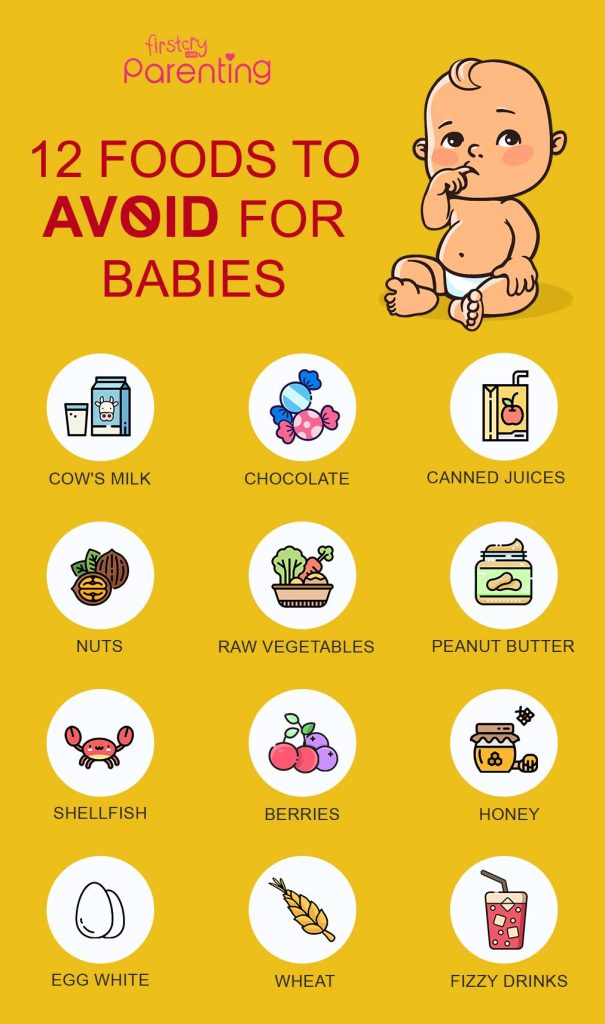Yes, you can breastfeed and formula feed your baby. This combination is known as mixed or combination feeding.
Many parents choose mixed feeding for various reasons. Some mothers may have low milk supply or need to return to work. Others may prefer the flexibility of using both breastfeeding and formula. Combining both methods allows the baby to receive the benefits of breast milk while ensuring they get enough nutrition.
It can also help other family members bond with the baby during feeding times. Mixed feeding can be a practical solution for many families. Always consult with a healthcare professional to ensure your baby’s nutritional needs are met.
Introduction To Combination Feeding
Combination feeding involves both breastfeeding and formula feeding. This method offers flexibility for parents. It lets the baby get the benefits of both breast milk and formula.
Some parents choose this method due to personal reasons. Others may have medical reasons. Combination feeding can be a great option for many families.
Benefits Of Combination Feeding
- Flexibility: Both parents can share feeding duties.
- Convenience: Formula can be used when breastfeeding is not possible.
- Nutritional Balance: Babies get nutrients from both sources.
- Less Stress: Mothers feel less pressure to breastfeed all the time.
Combination feeding allows mothers to return to work easily. It also gives fathers a chance to bond during feeding time.
Common Myths Debunked
| Myth | Truth |
|---|---|
| Combination feeding causes confusion for babies. | Babies can adapt to both breast and bottle. |
| Formula feeding is harmful. | Formula is safe and nutritious for babies. |
| Breastfeeding will stop if you use formula. | Breastfeeding can continue with formula use. |
Combination feeding can be a personal choice. It offers a balanced approach to feeding your baby. Understanding the myths helps in making an informed decision.
:max_bytes(150000):strip_icc()/combining-breastfeeding-and-formula-feeding-431930-c35deb8a68a6442dbb6e8995a0315e58.png)
Credit: www.verywellfamily.com
Getting Started
Breastfeeding and formula feeding can work together. Many parents choose this method. It offers flexibility and convenience. This section helps you get started with mixed feeding.
When To Introduce Formula
Timing is important. Wait until breastfeeding is well-established. This usually takes 3 to 4 weeks. Introducing formula earlier may affect milk supply. Gradual introduction is best.
- Start with one bottle a day.
- Pick a time when your baby is calm.
- Ensure you are relaxed too.
Choosing The Right Formula
There are many formula options. Choose one that suits your baby’s needs. Look for formulas with essential nutrients.
| Type of Formula | Best For |
|---|---|
| Cow’s Milk-Based Formula | Most babies |
| Soy-Based Formula | Milk allergies |
| Hydrolyzed Formula | Sensitive stomachs |
Consult your pediatrician before making a choice. They can guide you to the best option.
Feeding Schedule
Creating a feeding schedule for your baby can be both exciting and challenging. Combining breastfeeding and formula feeding gives you flexibility. A structured routine can help ensure your baby gets the right nutrition. Let’s explore how to create a flexible routine and recognize signs that your baby is hungry.
Creating A Flexible Routine
Establishing a flexible routine can make feeding easier. It helps you and your baby know what to expect. Here’s a simple plan to get started:
- Morning: Breastfeed your baby when they wake up.
- Mid-morning: Offer a bottle of formula.
- Afternoon: Breastfeed after their nap.
- Evening: Give a bottle of formula before bed.
Adjust the schedule based on your baby’s needs. Flexibility is key. Consistency helps your baby feel secure.
Signs Your Baby Is Hungry
Understanding your baby’s hunger cues is crucial. This helps you feed them before they get too upset. Look for these signs:
- Rooting: Your baby turns their head towards your chest.
- Fists to Mouth: They put their hands near or in their mouth.
- Smacking Lips: Your baby makes sucking noises.
- Crying: A late sign of hunger.
Respond to these signs promptly. It helps keep your baby happy and healthy.
Balancing Breast And Bottle
Feeding your baby can be a mix of breastfeeding and formula feeding. This approach is often called “balancing breast and bottle.” This method gives flexibility and ensures your baby gets the nutrients they need.
Maintaining Milk Supply
To keep your milk supply strong, breastfeed regularly. Aim for at least 8-10 times a day. Pumping can help too. Use a good quality breast pump. Pump milk between nursing sessions. Drink plenty of water and eat a balanced diet. Rest is also crucial. Try to sleep when your baby sleeps.
Tips For Smooth Transition
Introduce the bottle gradually. Start with one bottle a day. Use a slow-flow nipple to mimic breastfeeding. Warm the formula to body temperature. Offer the bottle when your baby is calm. Have someone else offer the first bottle. Babies might refuse the bottle from their breastfeeding mom.
- Alternate between breast and bottle feedings.
- Be patient and consistent.
- Keep the experience relaxed and positive.
Below is a table to help you track your baby’s feeding schedule.
| Time | Breastfeeding | Formula Feeding |
|---|---|---|
| Morning | Yes | No |
| Mid-Morning | No | Yes |
| Afternoon | Yes | No |
| Evening | No | Yes |
Health And Nutrition
Breastfeeding and formula feeding both have their own health benefits. Understanding these can help you make informed decisions for your baby’s nutrition. This section explores the health and nutrition aspects of mixed feeding.
Nutritional Needs Of Infants
Infants need a balanced diet for healthy growth. Breast milk provides essential nutrients and antibodies. It helps build the baby’s immune system.
Formula milk is also rich in vitamins and minerals. It is designed to mimic breast milk. Combining both can ensure your baby gets all necessary nutrients.
Here’s a comparison of the nutrients provided by both:
| Nutrient | Breast Milk | Formula Milk |
|---|---|---|
| Proteins | High-quality proteins | Balanced proteins |
| Fats | Essential fatty acids | Essential fatty acids |
| Vitamins | Natural vitamins | Fortified vitamins |
| Antibodies | Present | Absent |
Monitoring Baby’s Growth
Regular check-ups are important. They help track your baby’s growth.
Look for milestones like weight gain and height. Also, observe developmental signs like smiling and crawling.
Here are some tips for monitoring growth:
- Keep a growth chart.
- Consult your pediatrician regularly.
- Track feeding times and quantities.
These steps will ensure your baby is growing well with mixed feeding.
Dealing With Challenges
Combining breastfeeding and formula feeding presents unique challenges. It’s normal to encounter some difficulties. Understanding and addressing these challenges can make the process smoother for both you and your baby.
Common Issues And Solutions
Many parents face common issues when mixing breastfeeding with formula feeding. Knowing how to handle these can make a big difference.
| Common Issues | Solutions |
|---|---|
| Nipple Confusion | Use a slow-flow nipple to mimic breastfeeding. |
| Breast Engorgement | Pump or express milk to relieve discomfort. |
| Reduced Milk Supply | Breastfeed more often to stimulate milk production. |
| Baby Prefers Bottle | Try different breastfeeding positions to comfort your baby. |
When To Seek Professional Help
If challenges persist, seeking professional help is crucial. Here’s when to consider it:
- Persistent Pain: Constant pain during breastfeeding needs expert advice.
- Low Milk Supply: Consult a lactation consultant to boost milk production.
- Baby’s Weight Gain: Monitor your baby’s weight. Seek help if there’s no gain.
- Frequent Infections: Recurring breast infections require medical attention.
Professional guidance can provide customized solutions to these problems. Don’t hesitate to reach out for help.
Emotional Aspects
Choosing between breastfeeding and formula feeding can be challenging. The decision involves many emotional aspects. Understanding these can help you make the best choice for your baby and yourself.
Bonding With Your Baby
Bonding with your baby is crucial for their development. Breastfeeding can enhance this bond. The skin-to-skin contact during breastfeeding releases oxytocin, the “love hormone.” This hormone helps you and your baby feel closer.
Formula feeding can also support bonding. You can hold your baby close while bottle-feeding. This allows for important eye contact and cuddling. Partners can also feed the baby, strengthening family bonds.
Managing Guilt And Pressure
Many parents feel guilt and pressure about feeding choices. Society often promotes breastfeeding as the best option. This can make parents who choose formula feel guilty.
Remember, your well-being is essential for your baby. You should not feel guilty for choosing what works best for your family. A happy parent means a happy baby.
Talking to other parents and professionals can help. They can offer support and advice. Knowing you are not alone can ease feelings of guilt and pressure.

Credit: raisingchildren.net.au
Support Systems
Support systems are crucial for mothers who choose to both breastfeed and formula feed. These systems offer emotional, practical, and informational assistance, making the journey smoother and more enjoyable. Let’s explore the key support systems available.
Involving Your Partner
Involving your partner can make a significant difference. Your partner can help with feeding, especially during night shifts, providing you much-needed rest. They can also assist with bottle preparation and cleaning, lightening your load.
- Emotional Support: Your partner can offer encouragement and understanding.
- Shared Responsibilities: Sharing tasks ensures you are not overwhelmed.
- Bonding Time: Feeding the baby allows your partner to bond more.
Resources And Communities
Accessing resources and communities provides valuable insights and support. Online forums, local groups, and healthcare professionals can guide you through challenges.
| Resource | Benefit |
|---|---|
| Online Forums | Advice from experienced mothers. |
| Local Support Groups | Face-to-face interaction and shared experiences. |
| Healthcare Providers | Professional guidance on feeding techniques. |
Joining these communities can help you feel less isolated. You can learn from others and share your own experiences, making the journey rewarding.
:max_bytes(150000):strip_icc()/can-you-mix-breast-milk-and-infant-formula-431969-v1-5399760ec6b8457cb7a64cbe9a812aa6.png)
Credit: www.parents.com
Frequently Asked Questions
What Happens When You Breastfeed And Formula Feed?
Breastfeeding and formula feeding together is called combination feeding. It provides flexibility and ensures your baby gets enough nutrients.
Is It Ok To Feed My Baby Formula And Breastmilk?
Yes, you can feed your baby both formula and breastmilk. Combining both can provide essential nutrients. Consult your pediatrician for guidance.
Can I Still Breastfeed If I Give My Baby Formula?
Yes, you can breastfeed even if you give your baby formula. Many mothers use both methods successfully. Breastfeeding and formula feeding can complement each other. Consult your pediatrician for personalized advice.
Why Is Mixed Feeding Not Recommended?
Mixed feeding can confuse a baby’s digestive system. It may cause allergies, digestive issues, and nutrient imbalances. Breastfeeding exclusively offers optimal nutrition and immune support.
Conclusion
Choosing to breastfeed and formula feed can offer flexibility and convenience. Every family has unique needs and circumstances. It’s important to consult with healthcare professionals for personalized advice. Combining both methods can ensure your baby gets the necessary nutrients. Always prioritize what works best for you and your baby.


